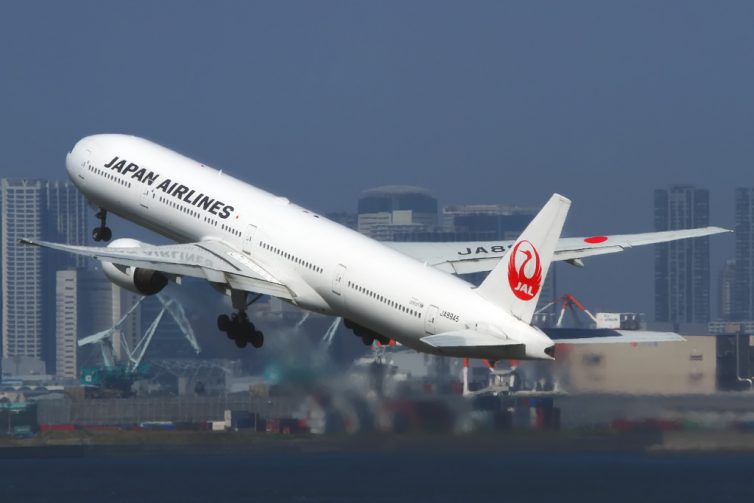Japan Airlines (JAL) announced last week that its newly-revamped Boeing 777-200ERs (772s) dubbed “JAL SKY SUITE 777” or “SS2” will debut on June 18 from Tokyo Haneda (HND) to Bangkok (BKK). Designated for regional flying, the SS2 will feature now-industry standard lie-flat seating in business class, a roomy premium economy section, and best-in-class nine-abreast seating in economy, going against the grain during a time when virtually every new refurbishment of 777s calls for ten-abreast seating.
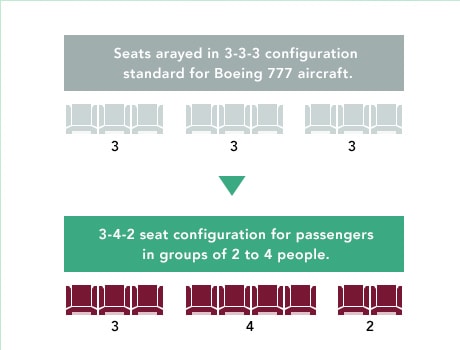
An illustration of the new economy seating configuration on JAL’s “SS2” Boeing 777-200ER – Image: Japan Airlines
What’s even more eye catching is JAL’s choice to go with an asymmetric 3-4-2 arrangement, while every other carrier uses 3-3-3 (well, when they do have nine across on their older planes). Where new premium seating is all the rage nowadays, JAL manages to remember the little people, and the economy cabin steals the spotlight…
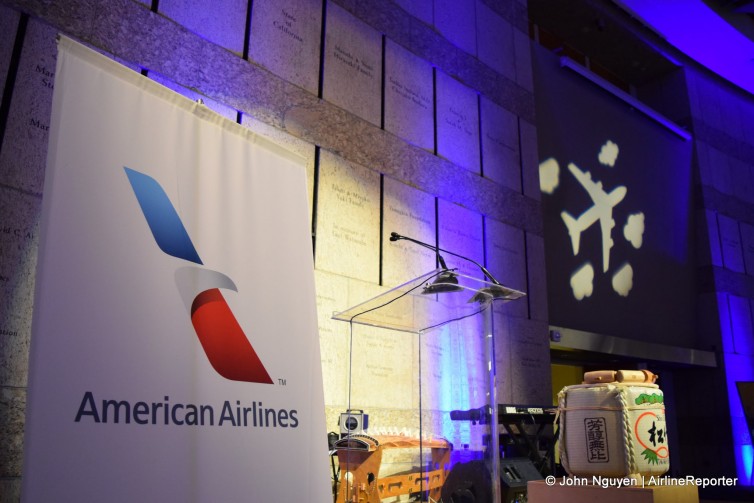
American Airlines hosts a launch party for its new LAX-Haneda flight.
It’s already been a busy 2016 for American Airlines, which has announced several service enhancements and, on February 11, launched its inaugural service from Los Angeles International Airport (LAX) to Toyko International Airport, more commonly known as Haneda Airport (HND). Premium passengers will enjoy additional comfort and convenience both before the flight and onboard, while those in economy will be able to enjoy some of the little things they’ve missed in the past couple of years.
As for American’s new flight into HND, a launch party for VIPs was held the previous night at the Japanese American National Museum in Downtown Los Angeles’ Little Tokyo, and AirlineReporter was invited to the festivities.
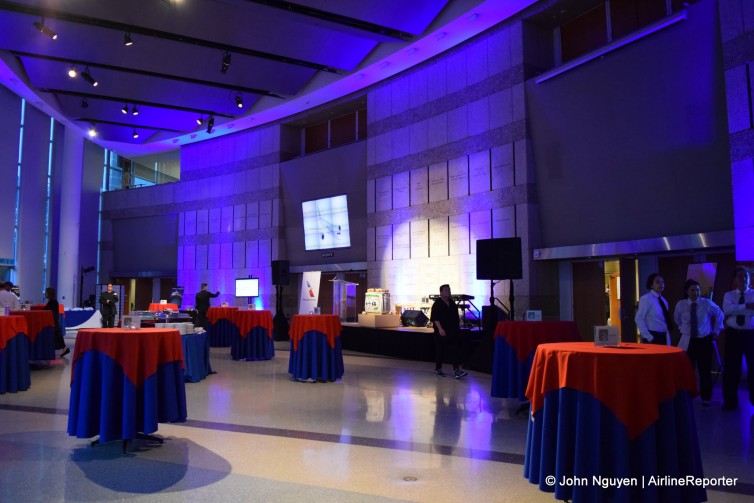
The George & Sakaye Aratani Central Hall at the Japanese American National Museum
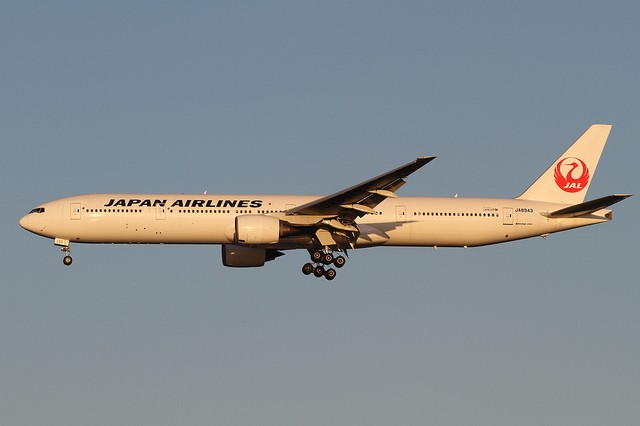
JAL Boeing 777-300ER landing in Haneda – Photo: Kentaro IEMOTO | Flickr CC
Recently, I visited Japan for the first time, and thanks to codesharing, my American Airlines ticket was for a flight operated by Japan Airlines. It’s always fun to try a new airline, and even better, I got an opportunity to fly in their Premium Economy cabin!
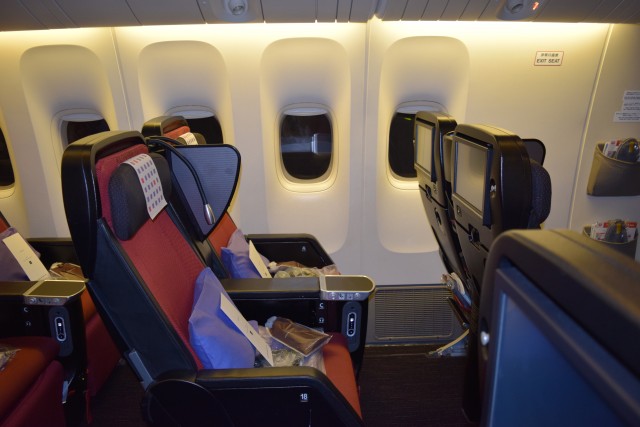
There’s my seat, 18A – Photo: Lauren Darnielle
Prior to boarding, I visited the Sakura Lounge at SFO, which is available to those traveling in Premium Economy – a nice benefit. It was pretty small, plain, and crowded, but I did appreciate the chance to have a little something before my flight. It was just after midnight, so at that hour, they had a selection of Japanese and American snacks along with mini sandwiches and a variety of alcoholic and non-alcoholic beverages. I had a glass of orange juice, a mini egg salad sandwich, and some rice crackers, which were all tasty, and then headed back to the gate.
The lounge was a bit of a walk from the gate, up an elevator, and down a hallway, but with my very short layover from Seattle, I didn’t want to hang around too long and miss my pre-arranged early boarding.
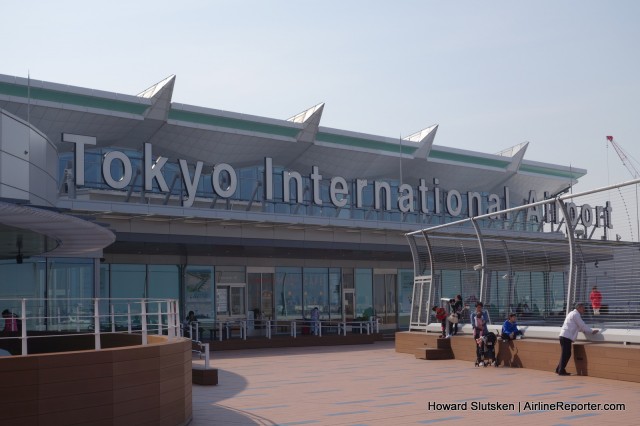
On the observation deck of the International Terminal at HND
You’ve got to hand it to the Japanese; always coming up with pragmatic solutions to problems. You’re having a walk in Tokyo and you’re thirsty? Grab a cold bottle of water from the vending machines you’ll find everywhere. Rainy day? Open up the umbrella you’re carrying. Just like most everyone else’s, it’s see-through, so you can make your way through the masses on the sidewalks without bumping into anyone. Simple. And those are just two of the countless observations I made during my blindingly fast visit to Tokyo.
If you’ve followed my stories, you’ll know that I traveled to Tokyo on ANA-All Nippon Airways’ inaugural flight from Vancouver (YVR) to Haneda (HND). There was a gate event at YVR for the inbound flight, ANA’s first-ever service to Canada. My flight to Tokyo was great, and then I was honored to watch ANA’s New Employee Ceremony in a hangar at HND, with ANA’s last 747-400D as a backdrop.
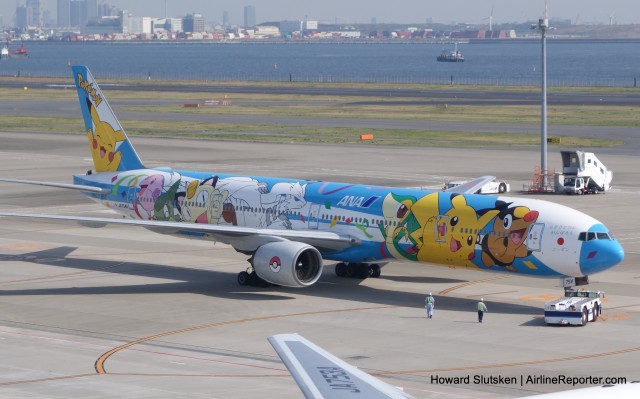
ANA 777-300 “Pokemon” pushes back from the gate at T2, HND
It was Tuesday afternoon, and I had split off from our media group to explore HND. I had heard that there was great plane spotting, and I wanted to see what the Japanese airport designers had done in the terminals. But first, a bit of background and a look at the layout of HND.
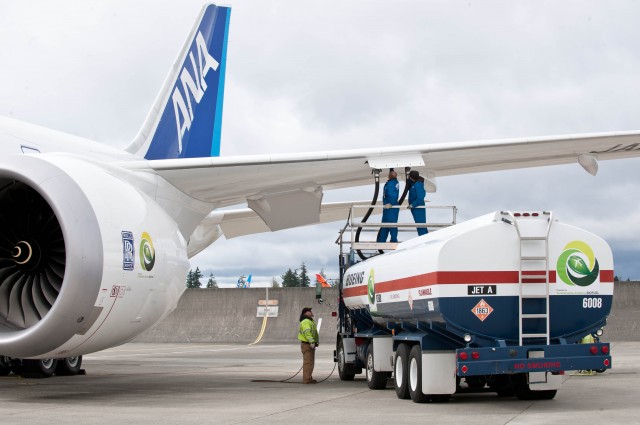
Boeing fills up ANA's 787 Dreamliner with biofuel. Photo from Boeing.
Earlier in the week, Boeing and All Nippon Airways (ANA) made aviation history by flying a 787 Dreamliner using a biofuel blend. There were no passengers on board this delivery flight from Evertt’s Paine Field (KPAE) to Haneda Airport (HND), but there was fuel that was primarly made from used cooking oil that emitted an estimated 10% less CO2 emissions.
’œThe 787 is the most environmentally progressive jetliner flying today, combining fuel efficiency and comfort with reduced carbon emissions,’ said Billy Glover, Commercial Airplanes Vice President of Environment and Aviation Policy.
This is also the first biofuel flight to occur over the pacific ocean.
“Our historic flight using sustainable biofuels across the Pacific Ocean highlights how innovative technology can be used to support our industry’s goal of carbon-neutral growth beyond 2020,’ Osamu Shinobe, ANA senior executive vice president, said.
Although biofuel on airlines is still not a cost effective fuel, with new research and technologies I feel that we will start to see the use of this alternative fuel used more and more, not only on airliners, but also in airport operations.
Other stories on biofuels and airlines:
* Alaska and United Use Biofuel on Scheduled Flights
* Lufthansa is First Airline to Use Biofuel on Schedule Flights
* Boeing, Alaska Airlines and Others Work Towards Using Sustainable Biofuels
* Back in January 2009, Boeing Gives Prediction That Biofuel Flights Will Be Arriving Soon

